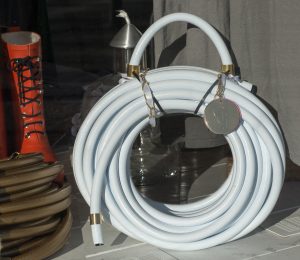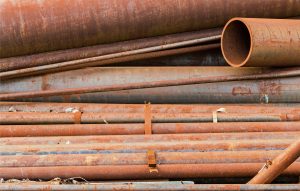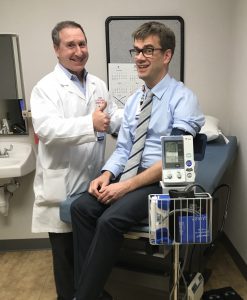
Dr. Marty Stillman reassures me about my blood pressure
For many years I have been telling listeners and patients that “one-third of you have high blood pressure and many of you don’t know it.” Turns out I need to update that to “nearly one-half of you have high blood pressure and many of you don’t know it.”
That is because the American College of Cardiology / American Heart Association guidelines for hypertension – high blood pressure – were recently updated. Like any good scientific process, the guidelines change as our knowledge of the science changes. That is exactly what occurred this past month.
I mentioned all this on the most recent Healthy Matters radio broadcast. I started the show off with this information, all of which you can listen to on the podcast by clicking Healthy Matters show #463, November 19,2017.
Your doctor may be . . . should be . . . talking about this with you at some future visit. In this post I’ll try to break the new guidelines down for you a bit. If you read on, you’ll find:
- New 2017 blood pressure guidelines
- Bad effects of high blood pressure
- A word about garden hoses and metal pipes. Huh?
- How to measure your own blood pressure.
- Treatments for high blood pressure.
- Tips about healthy living.
Let’s get to it.
Blood pressure guidelines in a nutshell
Later on I’ll explain hypertension a bit more. For now, here are the guidelines:
[table id=3 /]
If you remember one thing from this post, remember this:
< 120 / 80
The old guidelines used terms like pre-hypertension for blood pressure in the 120-139/80-89 range, and the old guidelines didn’t call it full-blown hypertension until it was ≥140/90.
 So many of you who have blood pressure in that 130-139/80-89 range, you now have hypertension. Congratulations. Just what you wanted. Those of you who used to be sitting pretty good in the 120s, well now your blood pressure is officially elevated. Lucky you.
So many of you who have blood pressure in that 130-139/80-89 range, you now have hypertension. Congratulations. Just what you wanted. Those of you who used to be sitting pretty good in the 120s, well now your blood pressure is officially elevated. Lucky you.
Simply changing the guidelines to these new numbers means that the prevalence of hypertension is now ~46% of the population. Nearly half. The people most affected by these new guidelines are actually younger people because they are more likely to have numbers in the new range. It is true that as we age, our risk for hypertension rises, so older folks are more likely to already be in the hypertensive range even before the new guidelines. So even if you are in your 40s, or 30s, or even 20s, you should pay attention to your blood pressure. The effect of high blood pressure is cumulative – the longer you have it the higher your risk for complications, so getting your numbers lower is important to do as soon as you can.
For much more from a reliable and high-quality source, check out the American Heart Association here.
Who cares?
You should care.
Knowing your blood pressure and keeping it under control by any number of methods can greatly benefit your long-term health. High blood pressure is a major risk factor for some rather bad stuff. The big three that immediately come to mind are: stroke, coronary artery disease which leads to heart attacks, and kidney failure. That’s not all, though. High blood pressure can also lead to heart failure, vision loss, and sexual dysfunction.
Garden hoses and metal pipes

By Bengt Nyman via Wikimedia Commons
It is probably way too simplistic, but I like to talk about garden hoses and metal pipes when explaining blood vessels to people. Bear with me.
Your blood vessels are normally like garden hoses. That is, they are rather rubbery and elastic. In fact, your arteries are quite muscular structures. This allows them to absorb the force of the blood flowing through them as it leaves the heart. Think of a garden hose.
As we age, and as the bad effects of atherosclerosis (hardening of the arteries) accumulate, your arteries become more like metal pipes. No longer able to stretch expand and contract quite so well, they tend to do their job less efficiently, and at higher pressures. Higher pressures in the brain lead to blocked or bleeding arteries in the brain. That’s a stroke. In the heart it leads to blocked coronary arteries which in turn leads to heart attacks. In the kidneys, poor blood flow due to high pressures and hardened arteries leads to a reduction in the filter rate of the kidneys. That’s kidney failure.

By W.carter via Wikimedia Commons
Yes, there is much more that contributes to these conditions than just the relative elasticity of your arteries, but you get the point.
Garden hoses are good. Metal pipes are bad. At least when we are talking about your arteries.
But I feel fine
So what symptoms should you look out for to know if you have high blood pressure? You’ve come to the right place. Here are the top five symptom of high blood pressure:
- _____________________________________
- _____________________________________
- _____________________________________
- _____________________________________
- _____________________________________
That was an easy list to type. The truth is that there are usually no symptoms of high blood pressure. More than any other disease, hypertension is often known as a silent killer for this reason. It is true that at very high, I mean really high, blood pressure, people have problems (dizziness, headache, shortness of breath, visual problems and so on) but for the common person walking around, there are no symptoms.
The only way to know if you have high blood pressure is to get it tested. This can be done any number of ways: in the doctor’s office, at home, at other public places. The trick is to rest for several minutes before getting it check, then sitting calmly and quietly while it is being measured. This should be done twice, on at least two different days. You then take the average of the two readings and that is what you base your decisions on.
An example using a very questionable patient
I checked my own blood pressure in preparation for writing this post. My friend and colleague, Dr. Marty Stillman, happened to be in the hospital hallway, so I enlisted his help. My friends are going to start avoiding me in the hallways lest they get roped into doing stuff like this.
Dr. Stillman and I ducked into a clinic room where we checked my blood pressure. And my numbers were something like this:
- First check:116/76
- Second check: 122/81
- Third check: 117/79
There was also a fourth reading where I changed body position and the numbers went up. I’m not including that reading here.

Dr. Marty Stillman gives my blood pressure the thumbs up
So what gives? Why the differences?
I list these numbers to illustrate that blood pressure changes all the time. I’m talking minute-by-minute. But look at my second reading: 122/81 – under the new guidelines that means I have elevated blood pressure, right?
Well, not exactly. One single reading is not adequate to determine if you have high blood pressure. Rather, you need to have several readings (at least two) taken on different days, to make the diagnosis.
Another trick is to look at the average of the readings. If you do that with my numbers, my average blood pressure over these three readings is 118/79. So I’m good! But again, this all needs to be repeated on a different day.
How to take blood pressure
Blood pressure is also affected by the method in which you measure it. It is physiologically normal for your blood pressure to rise (as well as your heart rate and your respirations) when you are physically active, or talking, or moving around. So when checking your blood pressure, you should:
- Sit still for at least 5 minutes. Even 10 minutes if you can.
- Don’t talk.
- Use the correct blood pressure cuff size (too small a cuff will make your pressure look higher than it actually is)
- Gently relax your arm. Don’t tense up.
- Avoid alcohol and caffeine for the hour preceding your measurement.
- Empty your bladder.
- Relax!
I find it notable that we often do none of these things when you come into the doctor’s office. We call you from the waiting room, put you in a room, immediately check your blood pressure, and talk to you the whole time. All while wearing a white coat which alone raises the blood pressure of many people. That’s an area of medical care that we could improve!
Here’s a high-quality interactive slide show about blood pressure measurement from the American Heart Association.
Treatments do work
So what if you do have high blood pressure?
Short answer: get it treated!
Longer answer: there are many interventions to get your blood pressure lower. You should always start with what we can loosely term “lifestyle” modifications, such as:
- Exercise regularly. Most days of the week, you should be moving and getting your heart rate up for at least 30 minutes.
- Maintain a healthy weight. Many people would benefit from even modest weight loss. I realize this is easy to say, harder to do. One point about weight loss that I believe: you can’t exercise your way to weight loss. Exercise is good for you and can help you to maintain your weight, but short of running a marathon, exercise alone will not lead to significant weight loss. See next item.
- Eat healthier than you are. Or think you are. Cut down on portion sizes. Eat less salt! Eat lower on the food chain (that means eat more plants). Maybe most importantly, eat when you are hungry and don’t worry quite so much about the specific foods you eat. But avoid eating too much, or eating out of habit, or eating because the clock on the wall tells you its time.
- Stop smoking. You can stop and you should stop. There are no redeeming qualities to smoking. Sorry.
- Find ways to reduce stress in your life. Mindful meditation may help.
But as healthy as these lifestyle choices are, they are often not adequate to bring blood pressure down. so if your blood pressure is still >130/80 despite doing these things or at least attempting these things, it is time to consider medications.
If you worry about side effects, that is legit. Every medication has side effects. What you need to remember, however, is that the side effects of untreated high blood pressure are stroke, heart attack, and kidney failure. So find a medication (there are oodles to choose from) that minimizes side effects. I won’t get into the medication choices here as it is too much information for this forum, but it really doesn’t matter how you get your blood pressure down, just get it down somehow. If that takes a medication – or more commonly two, three, or four medications, so be it.
One other point about medications. If one of them doesn’t completely reduce your blood pressure, we usually add additional medications, rather than replacing one with another. Since medications work by different methods, it is perfectly OK to use several different types of medications to achieve blood pressure goals.
Hypertension ranks way up there on things to fix
People often ask me about the top few things they can do to be healthier. I usually put treating high blood pressure someone in the top handful of things you can do to get healthier.
FYI, my “top things you can do to be healthy” also include:
- Stopping smoking
- Getting to and maintaining a healthy weight
- Eating healthy
- Exercising more
- Getting vaccinations
Put getting to a normal blood pressure in that list as well!
One more time, if you remember one thing from this post, remember this:
< 120 / 80
Stay connected
Thanks for stopping by! Here are ways we can stay connected:
- Subscribe to MyHealthyMatters by e-mail (do it below or at the top of this post).
- Follow me on Twitter @DrDavidHilden
- Listen to the podcasts, without commercial break. Download to your device here.
-David
